The Frontiers of Plasma Physics colloquium is jointly sponsored by PPPL and the Journal of Plasma Physics.
A full list of upcoming colloquia can be found on the JPP Frontiers of Plasma Physics Colloquium Upcoming Talks webpage.
 Emilia Solano, Centre for Research on Energy, Environment and Technology, Spain
, Google Scholar, abstract
Emilia Solano, Centre for Research on Energy, Environment and Technology, Spain
, Google Scholar, abstract Alfred Mallet,Space Sciences Laboratory, University of California, Berkeley, USA
, Google Scholar, abstract
Alfred Mallet,Space Sciences Laboratory, University of California, Berkeley, USA
, Google Scholar, abstract Mickael Grech, Ecole Polytechnique, Paris, France
, Google Scholar
Mickael Grech, Ecole Polytechnique, Paris, France
, Google Scholar David Hatch, Institute for Fusion Studies, University of Texas at Austin, USA
, Google Scholar, abstract
David Hatch, Institute for Fusion Studies, University of Texas at Austin, USA
, Google Scholar, abstract Antonino Di Piazza, University of Rochester, USA , abstract
Antonino Di Piazza, University of Rochester, USA , abstract Eric Sonnendrucker, IPP Garching, Germany , abstract
Eric Sonnendrucker, IPP Garching, Germany , abstract Arno Vanthieghem, Princeton University, USA , abstract
Arno Vanthieghem, Princeton University, USA , abstract Mervi Mantsinen, Barcelona Supercomputing Center, Spain
, abstract
Mervi Mantsinen, Barcelona Supercomputing Center, Spain
, abstract Meirielen Caetano De Sousa, École Polytechnique, France , abstract
Meirielen Caetano De Sousa, École Polytechnique, France , abstract Philip Snyder, Oak Ridge National Laboratory, USA , abstract
Philip Snyder, Oak Ridge National Laboratory, USA , abstract William Matthaeus, University of Delaware, Delaware, USA , abstract
William Matthaeus, University of Delaware, Delaware, USA , abstract Yohei Kawazura, Tohoku University, Japan , abstract
Yohei Kawazura, Tohoku University, Japan , abstract Subir Sarkar, University of Oxford, UK , abstract
Subir Sarkar, University of Oxford, UK , abstract Virginia Bresci, Leibniz Institute for Astrophysics Potsdam, Germany , abstract
Virginia Bresci, Leibniz Institute for Astrophysics Potsdam, Germany , abstract Camille Granier, Observatoire De La Cote D’azur, France , abstract
Camille Granier, Observatoire De La Cote D’azur, France , abstract Prakriti Pal Choudhury, University of Cambridge, UK , abstract
Prakriti Pal Choudhury, University of Cambridge, UK , abstract Francesco Valentini, University of Calabria, Italy , abstract
Francesco Valentini, University of Calabria, Italy , abstract Julia Tjus, Ruhr Universitaet Bochum, Germany , abstract
Julia Tjus, Ruhr Universitaet Bochum, Germany , abstract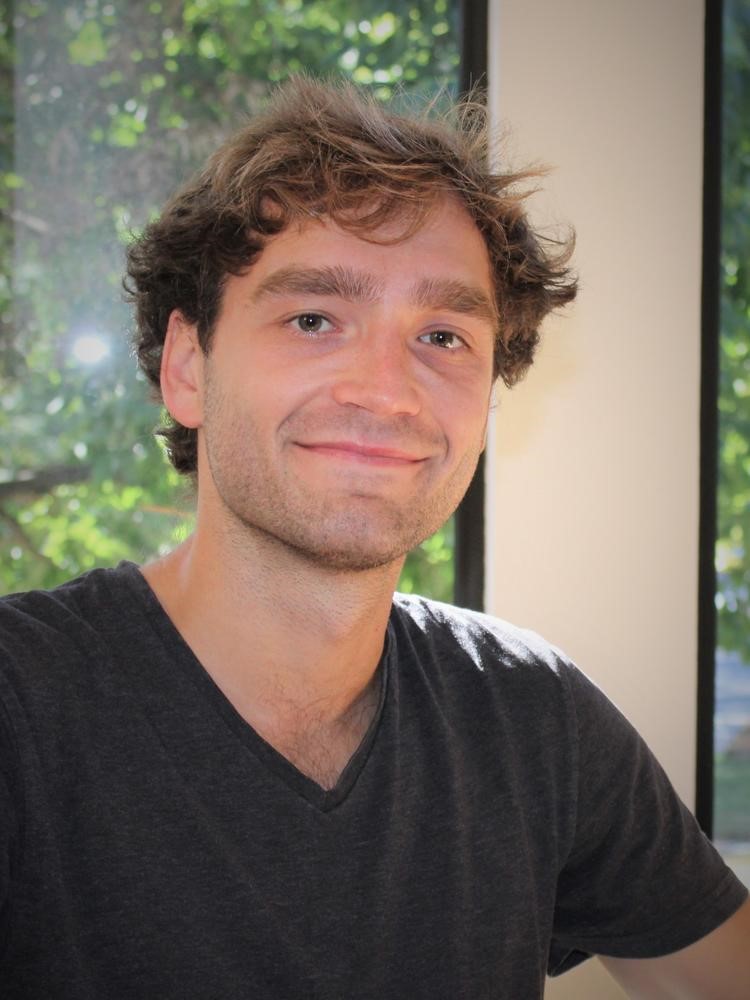 Philipp Kempski, Princeton University , UK , abstract
Philipp Kempski, Princeton University , UK , abstract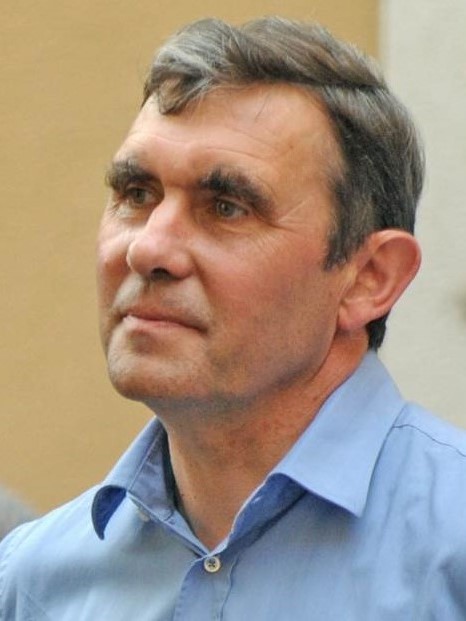 Xavier Garbet, CEA and NTU, Singapore
, abstract
Xavier Garbet, CEA and NTU, Singapore
, abstract Clarisse Bourdelle, CEA, France
, abstract
Clarisse Bourdelle, CEA, France
, abstract Alessandro Zocco, IPP Greifswald, Germany
, abstract
Alessandro Zocco, IPP Greifswald, Germany
, abstract Davide Manzini, École Polytechnique, France
, abstract
Davide Manzini, École Polytechnique, France
, abstract Paul Cassak, West Virginia University, USA
, abstract
Paul Cassak, West Virginia University, USA
, abstract Alsu Sladkomedova, Tokamak Energy Ltd, UK
, abstract
Alsu Sladkomedova, Tokamak Energy Ltd, UK
, abstract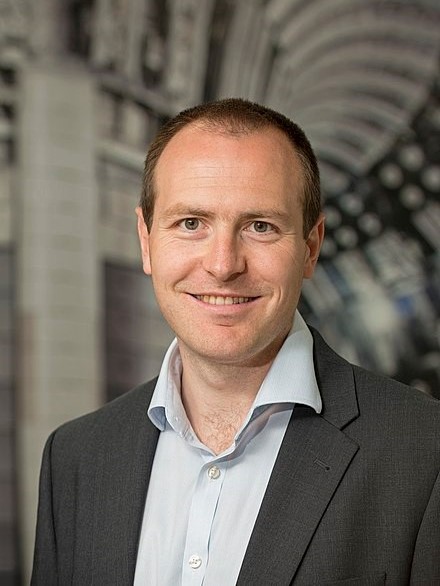 Sir Ian Chapman (CEO, UKAEA), UK Atomic Energy Authority, UK
, abstract
Sir Ian Chapman (CEO, UKAEA), UK Atomic Energy Authority, UK
, abstract Christoph Pfrommer, Leibnitz Institute for Astrophysics, Germany
, abstract
Christoph Pfrommer, Leibnitz Institute for Astrophysics, Germany
, abstract Frederico Fiuza, SLAC, Stanford, USA
, abstract
Frederico Fiuza, SLAC, Stanford, USA
, abstract Gabe Plunk, IPP Greifswald, Germany
Gabe Plunk, IPP Greifswald, Germany
 Rogerio Jorge, Instituto Superior Técnico, Portugal
, abstract
Rogerio Jorge, Instituto Superior Técnico, Portugal
, abstract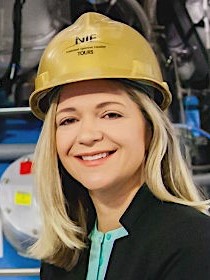 Annie Kritcher, Lawrence Livermore National Laboratory, USA
, abstract
Annie Kritcher, Lawrence Livermore National Laboratory, USA
, abstract Sergio Servidio, University of Calabria, Italy , abstract
Sergio Servidio, University of Calabria, Italy , abstract Giuseppe Arrò, Katholieke Universiteit Leuven, Belgium , abstract
Giuseppe Arrò, Katholieke Universiteit Leuven, Belgium , abstract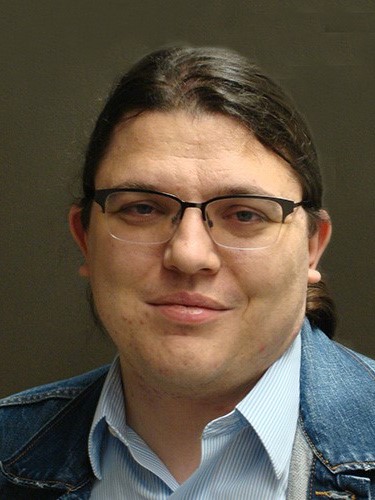 Ian Abel, University of Maryland, USA
Ian Abel, University of Maryland, USA  Emily Belli, General Atomics, USA , abstract
Emily Belli, General Atomics, USA , abstract Chris Hamilton, IAS, Princeton, USA , abstract
Chris Hamilton, IAS, Princeton, USA , abstract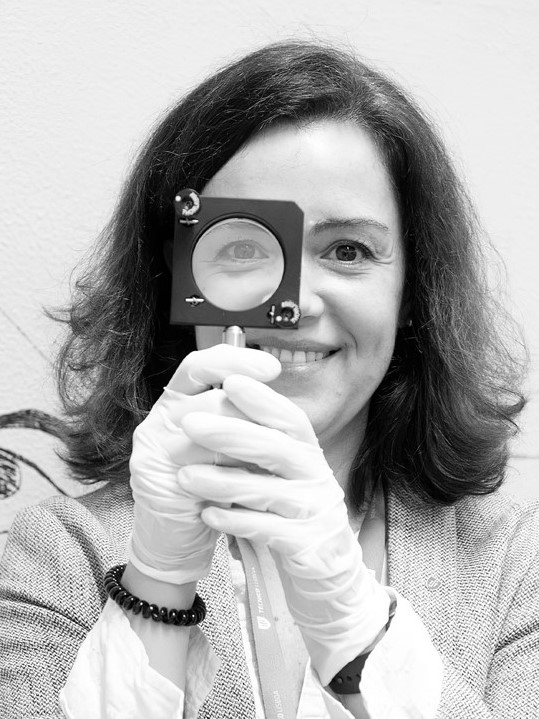 Marta Fajardo, Instituto Superior Técnico, Portugal , abstract
Marta Fajardo, Instituto Superior Técnico, Portugal , abstract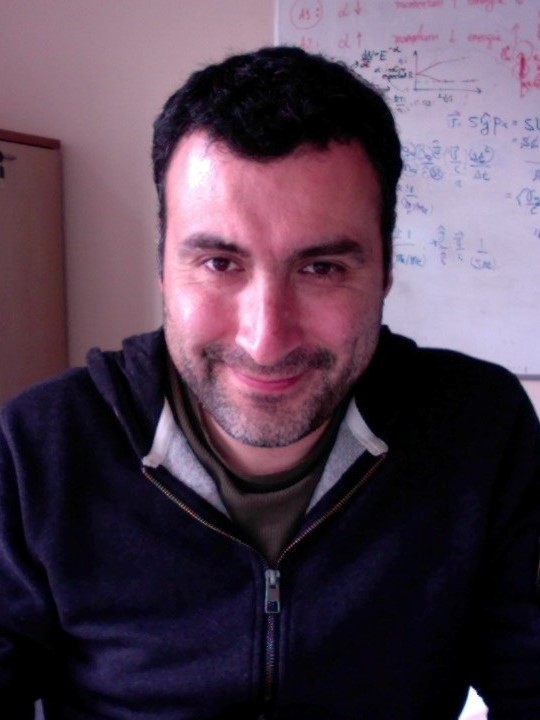 Mario Riquelme, University of Chile, Chile , abstract
Mario Riquelme, University of Chile, Chile , abstract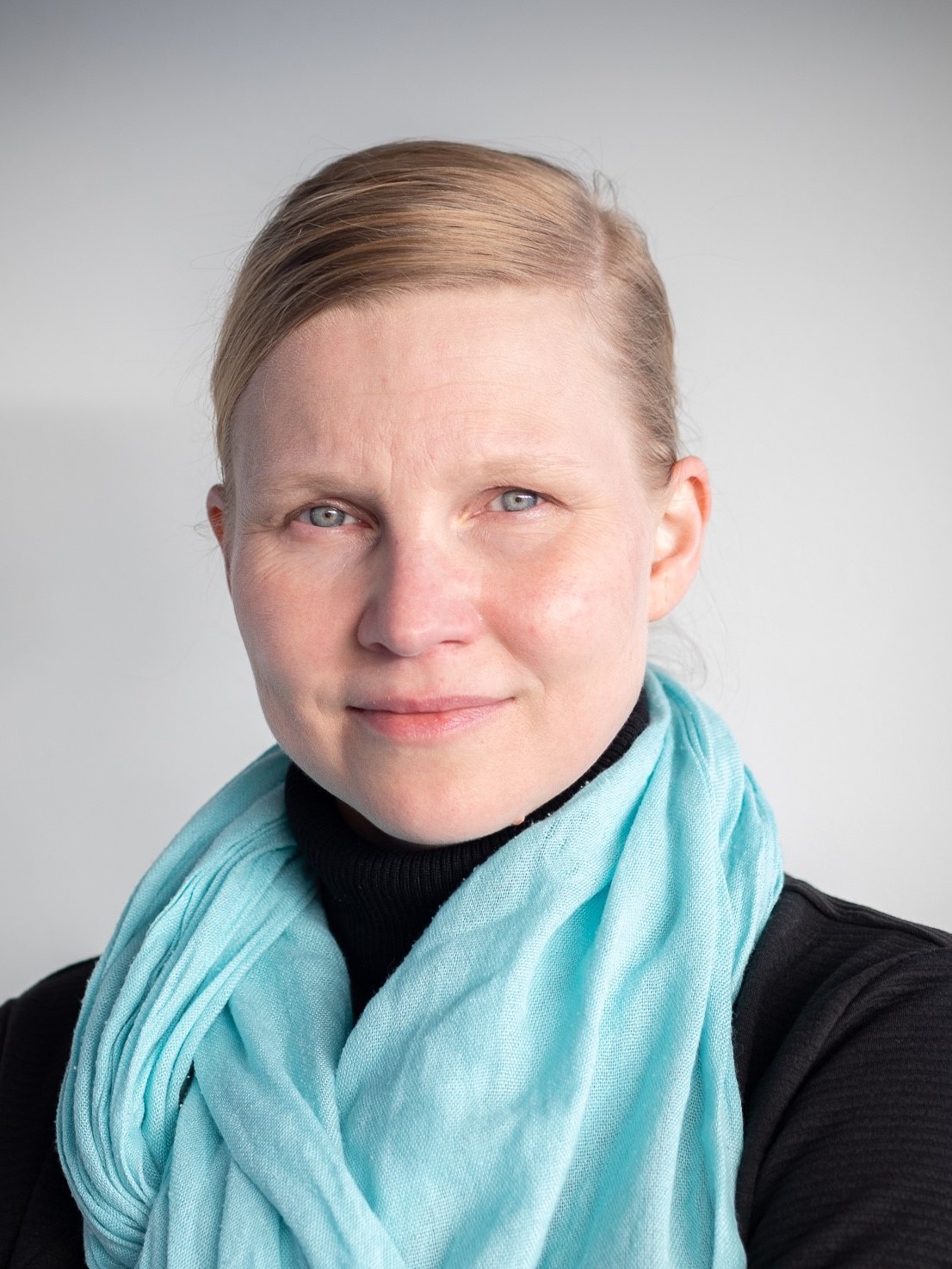 Maarit-Korpi-Lagg, Aalto University, Finland , abstract
Maarit-Korpi-Lagg, Aalto University, Finland , abstract Luis Oliveira e Silva, Instituto Superior Técnico, Universidade de Lisboa, Portugal , abstract
Luis Oliveira e Silva, Instituto Superior Técnico, Universidade de Lisboa, Portugal , abstract Paolo Ricci, EPFL, Switzerland University, Switzerland , abstract
Paolo Ricci, EPFL, Switzerland University, Switzerland , abstract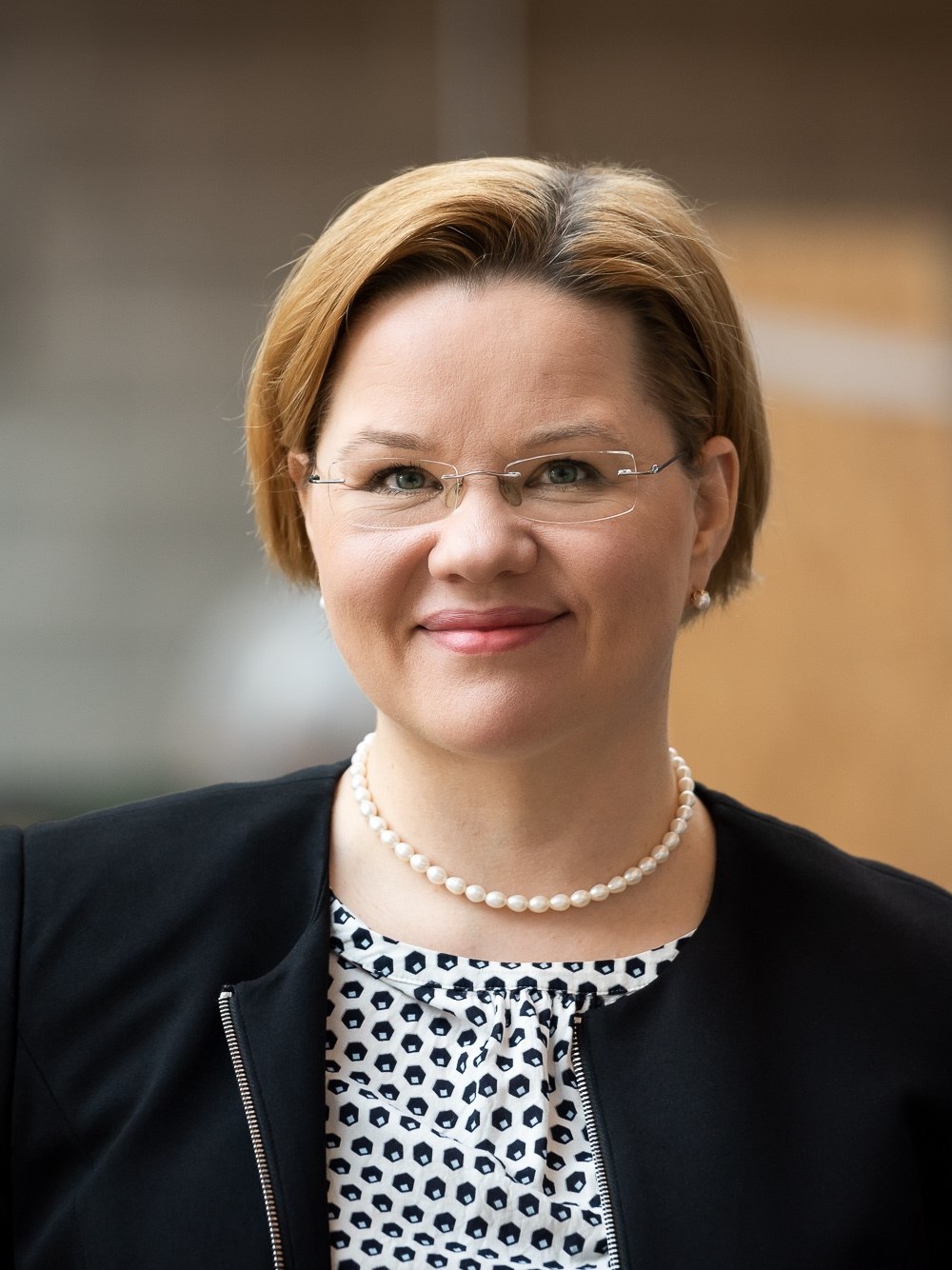 Minna Palmroth, University of Helsinki, Finland , abstract
Minna Palmroth, University of Helsinki, Finland , abstract Andrei Beloborodov , Columbia University, USA
Andrei Beloborodov , Columbia University, USA  David Kirtley, Helion Energy, USA
David Kirtley, Helion Energy, USA  Fabio Bacchini, Katholieke Universiteit, Leuven, Belgium , abstract
Fabio Bacchini, Katholieke Universiteit, Leuven, Belgium , abstract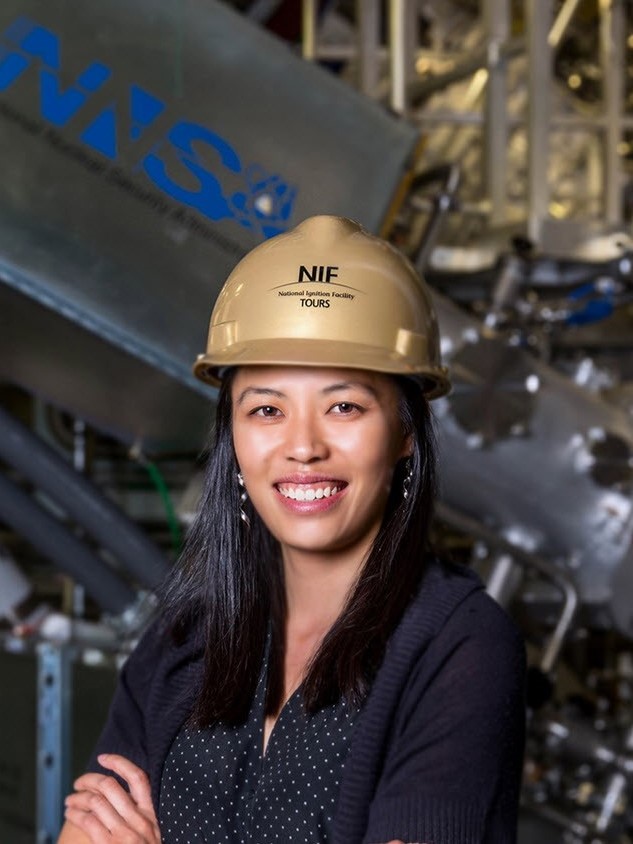 Tammy Ma, Lawrence Livermore National Laboratory, USA , abstract
Tammy Ma, Lawrence Livermore National Laboratory, USA , abstract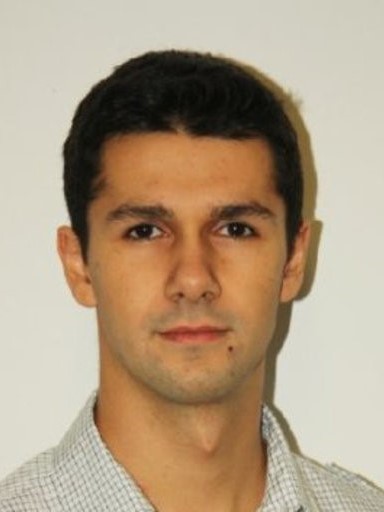 László Bardóczi, General Atomics, USA , abstract
László Bardóczi, General Atomics, USA , abstract Daniela Grasso, Lawrence Livermore National Laboratory, USA , abstract
Daniela Grasso, Lawrence Livermore National Laboratory, USA , abstract Michele Romanelli, Tokamak Energy Ltd, UK
Michele Romanelli, Tokamak Energy Ltd, UK  Mikhail Medvedev, University of Kansas, USA , abstract
Mikhail Medvedev, University of Kansas, USA , abstract Laurent Gremillet, CEA-DAM-DIF, France, abstract
Laurent Gremillet, CEA-DAM-DIF, France, abstract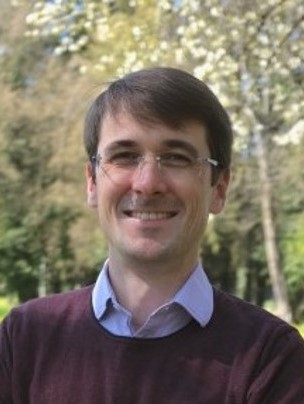 Benoit Cerutti, University of Grenoble, France, abstract
Benoit Cerutti, University of Grenoble, France, abstract Markus Roth, Focused Energy Inc., Germany , abstract
Markus Roth, Focused Energy Inc., Germany , abstract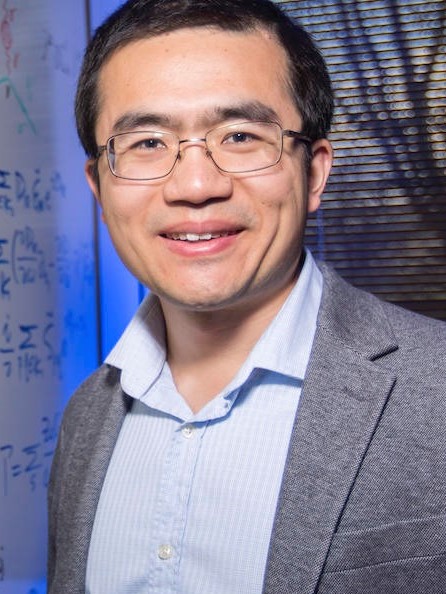 Yuan Shi, LLNL, USA , abstract
Yuan Shi, LLNL, USA , abstract Maxim Lyutikov, Purdue University, USA , abstract
Maxim Lyutikov, Purdue University, USA , abstract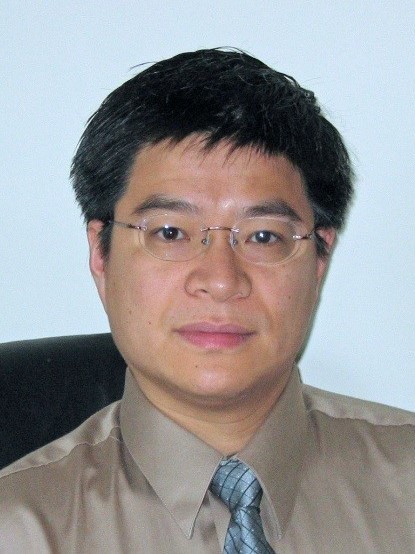 Hong-Qin, PPPL, USA , abstract
Hong-Qin, PPPL, USA , abstract Jack Halliday, Imperial College London, UK , abstract
Jack Halliday, Imperial College London, UK , abstract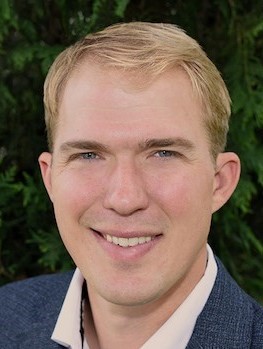 Scott Baalrud, University of Michigan, USA, abstract
Scott Baalrud, University of Michigan, USA, abstract Anne White, MIT, USA, abstract
Anne White, MIT, USA, abstract Jon Hillesheim, UK Atomic Energy Authority, UK - Chaired by: Bill Dorland, Editor, JPP , abstract
Jon Hillesheim, UK Atomic Energy Authority, UK - Chaired by: Bill Dorland, Editor, JPP , abstract Ami Dubois, Naval Research Laboratory, USA , abstract
Ami Dubois, Naval Research Laboratory, USA , abstract Martin Lemoine, Institut d'Astrophysique de Paris, France
Martin Lemoine, Institut d'Astrophysique de Paris, France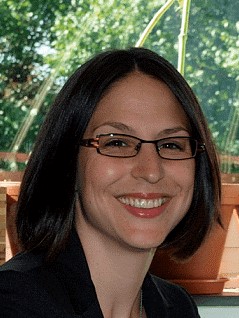 Rachael McDermott, IPP, Garching, Germany
, abstract
Rachael McDermott, IPP, Garching, Germany
, abstract Alice Harding, NASA Goddard Space Flight Center, USA
, abstract
Alice Harding, NASA Goddard Space Flight Center, USA
, abstract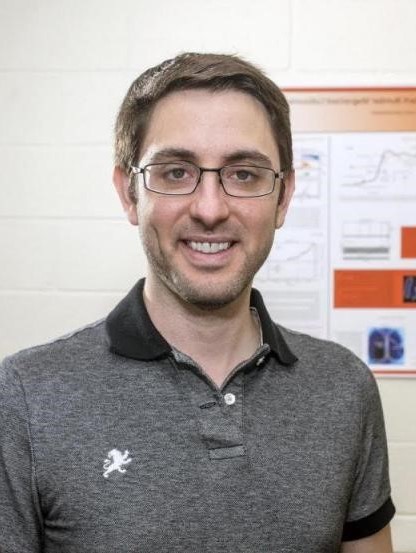 Derek Schaeffer, Princeton University, USA
, abstract
Derek Schaeffer, Princeton University, USA
, abstract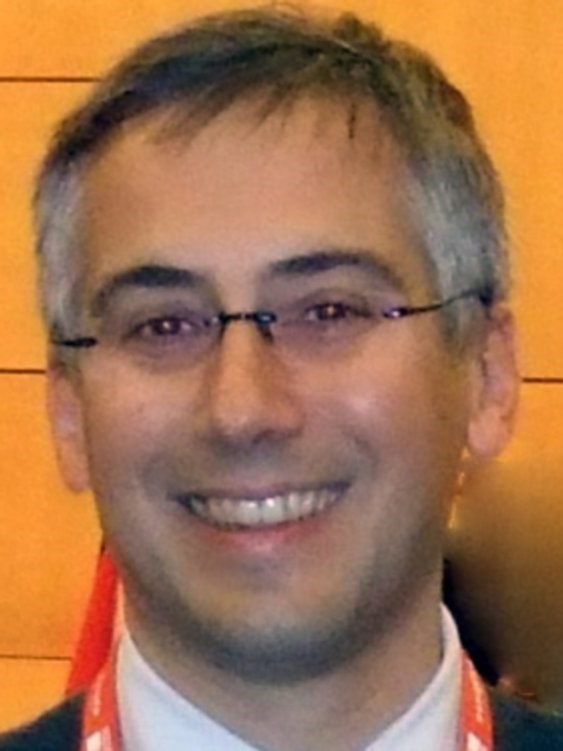 Piero Martin, University of Padova, Italy
, abstract
Piero Martin, University of Padova, Italy
, abstract Archie Bott, Princeton University, USA
, abstract
Archie Bott, Princeton University, USA
, abstract Bill Dorland,University of Maryland, Princeton Plasma Physics, USA , abstract
Bill Dorland,University of Maryland, Princeton Plasma Physics, USA , abstract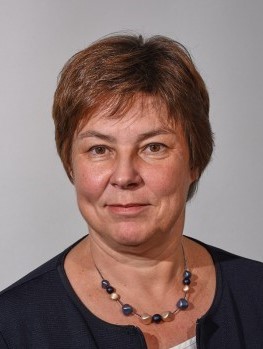 Elizabeth Wolfrum, IPP Garching, Germany
, abstract
Elizabeth Wolfrum, IPP Garching, Germany
, abstract Shinya Maeyama, Nagoya University, Japan
, abstract
Shinya Maeyama, Nagoya University, Japan
, abstract Mark Sherlock, Lawrence Livermore National Laboratory, USA
, abstract
Mark Sherlock, Lawrence Livermore National Laboratory, USA
, abstract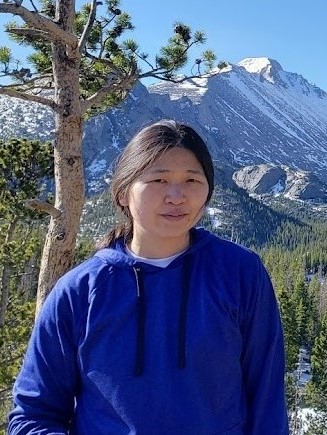 Erika Ye, MIT, USA
, abstract
Erika Ye, MIT, USA
, abstract Michael Barnes, University of Oxford, UK
, Google Scholar
Michael Barnes, University of Oxford, UK
, Google Scholar
 Vladimir Zhdankin, Flatiron Institute, USA
, Google Scholar
Vladimir Zhdankin, Flatiron Institute, USA
, Google Scholar
 Ian Hutchinson, MIT, USA
, abstract
Ian Hutchinson, MIT, USA
, abstract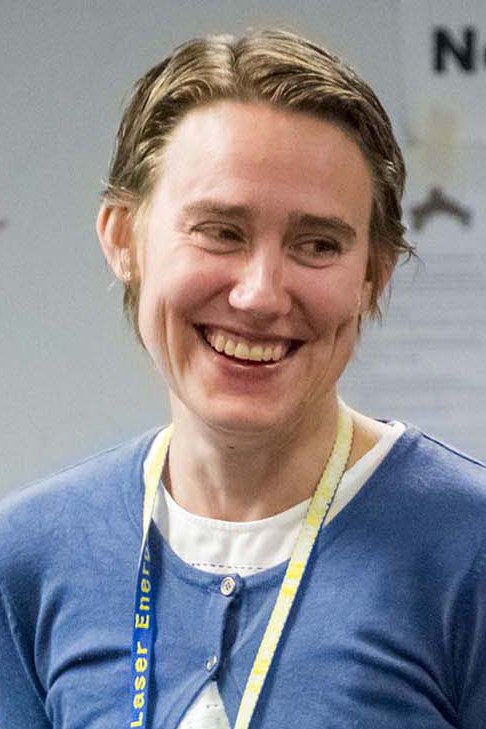 Maria Gatu Johnson, MIT, USA
, Website
Maria Gatu Johnson, MIT, USA
, Website
Abstract: Thermonuclear reaction rates and nuclear processes have been explored traditionally by means of accelerator experiments, which are difficult to execute at conditions relevant to Stellar Nucleosynthesis. High-Energy-Density (HED) plasmas closely mimic astrophysical environments and are an excellent complement to accelerator experiments. This talk will focus on HED experiments to study the T+T reaction at the OMEGA laser facility, and the mirror 3He+3He reaction at OMEGA and at the National Ignition Facility (NIF). We present neutron spectra from the T(t,2n)α(TT) reaction measured in HED experiments at ion temperatures from 4 to 18 keV, corresponding to center-of-mass energies (Ec.m.) from 16 to 50 keV. A clear difference in the shape of the TT-neutron spectrum is observed between the two Ec.m., providing the first conclusive evidence of a variant TT-neutron spectrum in this Ec.m. range. Preliminary data from a recent discovery science experiment at the NIF exploring the solar 3He+3He reaction at Ec.m. from 60-120 keV will also be discussed. In addition, the talk will cover the potential of this new field of research, ongoing efforts, and future directions for studying nuclear astrophysics-relevant nuclear processes at OMEGA and the NIF. This work was supported in part by the U.S. DOE, the MIT/NNSA CoE, LLE and LLNL.
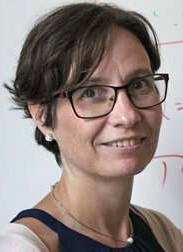 Saskia Mordijck, College of William & Mary, USA
, Google Scholar
, Web Page
Saskia Mordijck, College of William & Mary, USA
, Google Scholar
, Web Page
Abstract:
Abstract: The fusion gain in a tokamak is directly linked to the density of the plasma. However, due to the high temperatures necessary for fusion, it is impossible to fuel the core of the plasma directly and directly influence the core density. Without any direct fueling in the core of a tokamak, the plasma density is fully controlled by transport perpendicular to the confining magnetic field surfaces. In this talk, I will show how cross-field transport of electrons is dominated by turbulence in the plasma core by comparing experiments with existing models. These models capture how various types of turbulence influence transport and thus the density profile. While the density profile in the core is fully determined by turbulent transport, at the plasma edge, the picture is more complicated. At the edge of the tokamak, turbulent transport effects intermingle directly with fueling through ionization of the surrounding gas. To better understand the impacts of turbulence on the particle flux, we perform a series of experiments on LAPD varying the neutral density and electron density gradient. While some trends follow linear predictions of resistive drift wave turbulence, other phenomena cannot be explained using linear predictions..
 Dimitri Uzdensky, University of Colorado Boulder, USA
, Google Scholar
,Video
Dimitri Uzdensky, University of Colorado Boulder, USA
, Google Scholar
,Video
Abstract:
While traditional plasma physics deals with plasmas made up of a fixed number of electrons and ions that are nonrelativistic and nonradiative, there exist in the Universe important plasma environments with physical conditions so extreme that additional “exotic physics” (from a plasma physicist’s point of view) processes come into play: special and general relativity, strong coupling between plasma particles and photons, and, in most extreme cases, QED effects like pair production and annihilation. These processes alter the plasma dynamics near compact relativistic astrophysical objects — neutron stars and black holes — arguably, the most enigmatic and fascinating objects in the Universe. Understanding how collective plasma processes (waves, instabilities, shocks, magnetic reconnection, turbulence, etc.) operate under these exotic conditions calls for the development of a new, richer physical framework, which forms the scope of Extreme Plasma Astrophysics. I will review the rapid progress that is being made now in exploring this exciting new frontier, stimulated by the exploding astrophysical motivation and enabled by concerted, vigorous theoretical efforts and recent computational breakthroughs such as the advent of novel relativistic kinetic plasma codes incorporating radiation reaction and pair creation. I will illustrate this progress with recent studies of radiative relativistic turbulence and magnetic reconnection with pair creation in the context of accreting black-hole coronae and neutron-star magnetospheres. I will end by outlining the future directions of the burgeoning field of Extreme Plasma Astrophysics.
 Allen Boozer, Columbia University, USA
, Google Scholar
, Web Page
,Video
Allen Boozer, Columbia University, USA
, Google Scholar
, Web Page
,Video
Abstract:
When a magnetic field undergoes a near-ideal evolution that involves all three spatial coordinates, mathematics and Maxwell's equations give a characteristic time scale for the initiation of reconnection. This time is given by the ideal evolution multiplied by a factor that depends only logarithmically on the strength of the non-ideal effects. The critical mathematical concept is chaos, which means the streamlines of the ideal flow of the magnetic field lines can separate exponentially in time. The mathematics of vector representations in three dimensions together with Faraday's law define the ideal flow velocity of magnetic field lines as well as an electromotive-like constant on each line which gives the non-ideality. Maxwell's equations imply chaotic flows are energetically impossible in a two-dimensional evolution, which makes conventional two-dimensional reconnection theory an extremely specialized subject. The magnitude of the current density in a three-dimensional reconnection depends only logarithmically on the strength of the non-ideal effects instead of being inversely proportional as in two dimensions. The current density lies in numerous thin but wide ribbons along the magnetic field lines. The concepts that underlie three-dimensional reconnection theory are unfamiliar to the plasma physics community. The talk will both explain these concepts and give simple examples of their application. To ensure those who would like have time to assess unfamiliar concepts, the slides that will be used are attached here.
 Lorin Swint Matthews, Baylor University, USA
, Google Scholar
, Web Page
Lorin Swint Matthews, Baylor University, USA
, Google Scholar
, Web Page
Abstract:
A complex, or dusty, plasma consists of sub-micron to micron-sized grains immersed in a plasma environment. Micron-sized dust grains have been successfully employed as non-perturbative probes to measure variations in plasma conditions on small spatial scales, such as those found in plasma sheaths. Within a sheath, ions are accelerated from the bulk plasma towards the charged boundary. Ions flowing past a dust grain form a positively charged spatial region downstream of the grain, called the ion wake. The ion wake in turn modifies the interaction potential between charged grains and can contribute to the stability of the dust structures which are formed in a given plasma environment. Thus, although dust grains can be used as non-invasive probes on “small scales”, on even “smaller scales” the perturbations to the plasma flow are necessary to establish a stable dust configuration. Here we present a multi-scale N-body model of the dust-plasma interactions. Results are compared with ground-based lab experiments as well as microgravity experiments onboard the International Space Station to determine quantities such as the charge on individual grains, the electric field within the region, and the nature of the ion wakefield.
 David Hosking, University of Oxford, UK
, Google Scholar
, Web Page
David Hosking, University of Oxford, UK
, Google Scholar
, Web Page
Abstract:
In this talk, I will describe a new theoretical picture of magnetically dominated, decaying turbulence in the absence of a mean magnetic field. I shall argue that the energy-decay rate of such a system is governed by the reconnection of magnetic structures, and not necessarily by ideal dynamics, as has previously been assumed. I will explain how a prediction for the decay law of magnetic energy can be obtained by assuming reconnection-mediated dynamics that respects the conservation of certain integral invariants, which represent topological constraints satisfied by the reconnecting magnetic field. As is well known, the magnetic helicity is such an invariant for initially helical field configurations, but does not constrain non-helical decay, where the volume-averaged magnetic-helicity density vanishes. For such a decay, I shall propose a new integral invariant, analogous to the Loitsyansky and Saffman invariants of hydrodynamic turbulence, that expresses the conservation of the random [scaling as volume^(1/2)] magnetic helicity contained in any sufficiently large volume. The existence of this `Saffman helicity invariant’ leads to a natural explanation of the inverse-transfer phenomenon reported by previous numerical studies. Finally, I shall describe an application of these results to the decay of primordial magnetic fields in the early Universe.
 Julia Stawarz, Imperial College London, UK
, Google Scholar
, Web Page
Julia Stawarz, Imperial College London, UK
, Google Scholar
, Web Page
Abstract:
Plasmas throughout the Universe undergo complex, highly nonlinear turbulent dynamics, which transfer energy from large to small-scale fluctuations and in the process generate a multitude of small-scale structures, such as current sheets. However, many space plasmas are nearly collisionless, making the question of how the turbulent fluctuations are dissipated a particularly challenging question. NASA’s Magnetospheric Mutiscale (MMS) mission is a formation of four Earth-orbiting satellites providing the high-resolution plasma measurements and inter-spacecraft separations necessary to examine plasma dynamics at scales approaching those of the electrons. In this presentation, I will discuss two recent studies that make use of the unique measurements from MMS in Earth’s magnetosheath to examine the small sub-proton scale dynamics of turbulent plasmas in greater detail than previously possible. In the first study, the behaviour of the turbulent electric field is examined by directly measuring the contributions from the terms in generalised Ohm’s law from fluid to electron-scales. In the second study, MMS observations are used to systematically identify magnetic reconnection events at the thin current sheets that are generated by the turbulent fluctuations. The large-scale properties of the turbulent fluctuations, in particular the correlation length, are found to influence the nature of the reconnection dynamics potentially leading to, so called electron-only reconnection, in which there is not enough space for ion to fully couple to the newly reconnected magnetic fields. Both of these studies provide insight into the nonlinear couplings, and potentially the dissipative dynamics, in collisionless plasmas.
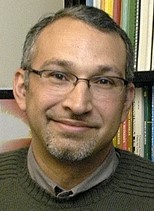 Omar Hurricane, Lawrence Livermore National Laboratory, USA
,Google Scholar
Omar Hurricane, Lawrence Livermore National Laboratory, USA
,Google Scholar
Abstract: Inertial confinement fusion (ICF) has existed as a field of study since the 1970s, but the field was born out of the Cold War. In the decades since the 1970s, pioneering research developing the principles and technologies of ICF culminated in the creation of several major facilities that exist today. While the technology of ICF facilities themselves is fascinating, this talk concentrates upon a handful of basic physics principles of “indirect-drive” (x-ray driven) targets fielded on the National Ignition Facility (NIF) in Northern California and upon some key results from the last decade of research, including some recent experiments that appear to have broached the burning plasma regime [1,2,3].
[1] A.B. Zylstra, O.A. Hurricane, D.A. Callahan, et al., in preparation (2021) [2] J.S. Ross, J.E. Ralph, A.B. Zylstra, et al., in preparation (2021) [3] A.L. Kritcher, C.V. Young, H.F. Robey, et al., in preparation (2021) *Work performed under the auspices of the U. S. Department of Energy by LLNL under contract DE-AC52-07NA27344
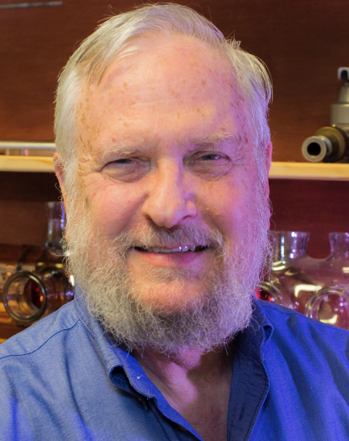 Samuel Cohen, PPPL, USA
,Webpage
Samuel Cohen, PPPL, USA
,Webpage
Abstract: The Princeton Field Reversed Configuration-2 (PFRC-2) is a research device for studying innovative physics methods to enable small clean fusion reactors. PFRC novel physics regimes are characterized by J┴B and kinetic conditions. Based on the limited availability of one fuel component, 3He, such reactors would be limited to use in niche applications, such as for spacecraft propulsion or emergency terrestrial power generation. First experiments, motivated by single-particle simulations of plasma heating by rotating magnetic fields of odd-parity symmetry (RMFo), produced electron temperatures in excess of 100 eV. The present research program addresses three topics: ion heating by RMFo; confinement; and stability. To achieve bulk ion energies in excess of 100 eV, ARPA-E-supported upgrades are being made to machine hardware, modeling capabilities, and diagnostics. Two new diagnostics have been installed, two-photon laser-induced fluorescence (TALIF, PU-MAE) and Thomson scattering (TS, ORNL). The TALIF diagnostic has measured the H° density in quasi-state-state and puffed gas discharges, allowing evaluation of particle confinement time and energy loss by CX. TS is now being put into operation. Additional planned increased capabilities include reflectometry (UC-Davis), DFSS for internal fields (ORNL), an ion energy analyzer (PPPL), and a PIC simulation code (U Rochester). Benefits of and the requirements for scrape-off-layer modification are described.
 Emily Lichko, University of Arizona, USA
Google Scholar
,Webpage
Emily Lichko, University of Arizona, USA
Google Scholar
,Webpage
Abstract: Due to low collisionality in space and astrophysical plasmas, distributions of ions and electrons observed by spacecraft exist in a state far from thermodynamic equilibrium. The non-Maxwellian features in these distribution functions can trigger microinstabilities, which likely play a role in some of the largest open questions in solar physics, including coronal heating, heating of the bulk solar wind, and accounting for high-frequency waves observed alongside the Alfvenic turbulent cascade. While there is a tremendous amount of information in the structure of these distribution functions, they are typically only represented by a fit of one or two Maxwellian or bi-Maxwellian distributions. In this work, we examine how the fidelity of the model to the observed distribution function affects our predictions for the stability of the plasma, and how much of the information in the distribution function is needed to accurately predict the behavior of the plasma. To do this, we use marginally stable one-dimensional, electrostatic simulations of the electron two-stream instability. For these simulations, there is significantly better agreement between the behavior of the plasma and the predictions of linear theory when a higher-fidelity representation of the distribution function is used. Preliminary work on the extension of these electrostatic results to the electromagnetic regime and the comparison of the predictions of linear wave activity with measurements of waves from Parker Solar Probe will be presented as well.
 William Daughton, Los Alamos National Laboratory, USA
Google Scholar
William Daughton, Los Alamos National Laboratory, USA
Google Scholar Benedikt Geiger, University of Wisconsin, Madison, USA
Webpage
Benedikt Geiger, University of Wisconsin, Madison, USA
Webpage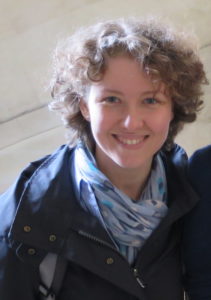 Olga Alexandrova, LESIA, Observatoire de Paris, France
Google Scholar
Olga Alexandrova, LESIA, Observatoire de Paris, France
Google Scholar
Abstract: Solar wind turbulence was mostly studied at MHD scales: there, magnetic fluctuations follow the Kolmogorov spectrum. The fluctuations are mostly incompressible and they have non-Gaussian statistics (intermittency), due to the presence of coherent structures in the form of current sheets, as it is widely accepted. Kinetic range of scales is less known and the subject of debates. We study the transition from Kolmogorov inertial range to small kinetic scales with a number of space missions. It becomes evident that if at ion scales (100-1000 km) turbulent spectra are variable, at smaller scales they follow a general shape. Thanks to Cluster/STAFF, the most sensitive instrument to measure magnetic fluctuations by today, we could resolve electron scales (1 km, at 1 AU) and smaller (up to 300 m) and show that the end of the electromagnetic turbulent cascade happens at electron Larmor radius scale, i.e., we could establish the dissipation scale in collisionless plasma. Furthermore, we show that intermittency is not only related to current sheets, but also to cylindrical magnetic vortices, which are present within the inertial range as well as in the kinetic range. This result is in conflict with the classical picture of turbulence at kinetic scales, consisting of a mixture of kinetic Alfven waves. The dissipation of these waves via Landau damping may explain the turbulent dissipation. How does this picture change if turbulence is not only a mixture of waves but also filled with coherent structures such as magnetic vortices? These vortices seem to be an important ingredient in other instances, such as astrophysical shocks: for example, they are observed downstream of Earth's and Saturn's bow-shocks. With the new data of Parker Solar Probe and Solar Orbiter we hope to study these vortices closer to the Sun to better understand their origin, stability and interaction with charged particles.
 Tim Horbury, Imperial College London, UK
,Webpage
Tim Horbury, Imperial College London, UK
,Webpage
 Christopher Reynolds, University of Cambridge, UK
Webpage
Christopher Reynolds, University of Cambridge, UK
Webpage
Abstract: The baryonic component of galaxy clusters is dominated by the intracluster medium (ICM), a hot and tenuous plasma atmosphere in an approximate state of hydrostatic equilibrium within the gravitational potential of the dark matter halo. The ICM is an important actor in many astrophysical processes within the cluster - the ram pressure of the ICM can strip cold gas out of orbiting galaxies, and radiative cooling can lead to significant galaxy building in the ICM core in a manner that is well-known to be regulated by feedback from the central supermassive black hole. However, all of these phenomena are influenced by transport processes within the weakly-collisional and high-beta ICM which are still poorly understood. In this talk I focus on the physics and astrophysical role of thermal conduction in the ICM. I summarize recent developments in understanding the role of whistler modes in the regulation of thermal heat transport and proceed to discuss some astrophysical implications of this new transport model. I end by discussing the future observational landscape of these ICM plasma studies.
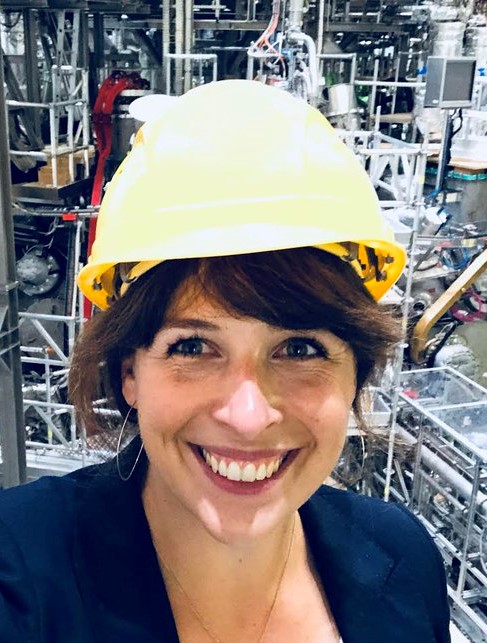 Josefine Proll, Eindhoven University of Technology, Holland
Google Scholar
Josefine Proll, Eindhoven University of Technology, Holland
Google Scholar
Abstract: Turbulence is one of the main obstacles to a working fusion reactor. Especially in stellarators, the large space of available magnetic field shapes allows for optimisation towards low levels of turbulence. A useful nonlinear measure of turbulence is that of available energy. Here I will show that the available energy calculated for trapped-electron-mode turbulence in different magnetic configurations can predict trends in the (simulated) heat flux of trapped-electron mode (TEM) turbulence in these configurations and could thus serve as a valuable proxy in future optimisation routines. Both, the available energy and the nonlinear simulations, support a previous linear prediction: that the class of optimised maximum-J stellarators, amongst them Wendelstein 7-X, particularly benefits from reduced turbulence. Previously, we had analytically shown that in these devices, the electron-driven TEM is absent. Here I will show that the stabilising property of the electrons also extends to ion-temperature gradient (ITG) modes and can thus explain the levels of low turbulence in the record-shots of Wendelstein 7-X at finite density gradient. Finally, I will present evidence that in the absence of TEMs, the universal instability can emerge and actually dominate the turbulence in optimised stellarators
 Edward Thomas, Auburn University, USA
Google Scholar
Edward Thomas, Auburn University, USA
Google Scholar
Abstract: The presence of charged, solid, particulate matter in plasmas, i.e., “dust”, is ubiquitous. From stellar nurseries to planetary rings and from fusion experiments to plasma processing reactors, “dusty” plasmas are found in a wide variety of naturally occurring and human-made plasma systems. Therefore, understanding the physics of dusty plasmas can provide insights into a broad range of astrophysical and technological problems. This presentation will focus on how the small charge-to-mass (q/m) ratio of the charged microparticles gives rise to many of the unique spatio-temporal properties of dusty plasmas. Moreover, this small charge-to-mass ratio strongly influences how magnetic field and microgravity studies of dusty plasmas are performed, leading to new investigations of previously unexplored regimes of plasma parameters. This presentation will discuss results from our studies of dusty plasmas in high magnetic fields (B ≥ 1 T) using the Magnetized Dusty Plasma Experiment (MDPX) device at Auburn University and in microgravity experiments using the Plasmakristall-4 (PK-4) laboratory on the International Space Station. At the end, the presentation will discuss the prospects for the future of dusty plasma research., abstract
 Plamen Ivanov, University of Oxford, UK
Google Scholar
Plamen Ivanov, University of Oxford, UK
Google Scholar
Abstract: Following the discovery of the Dimits shift (Dimits et al. 2000), the role of zonal flows (ZFs) for the transition to turbulence in tokamak plasmas has been an area of intense research. We attempt to shed some light on this problem by studying the transition to turbulence in a simplified cold-ion fluid model for ion-scale turbulence in Z-pinch magnetic geometry. Our equations are obtained in a highly collisional, cold-ion, asymptotic limit of the ion gyrokinetic equation and capture the two well-known ion-temperature-gradient (ITG) instabilities driven by either magnetic curvature or parallel compression. We find that this model has a well-defined Dimits (low-transport, ZF-dominated) state characterised by a staircase-like arrangement of ZFs and zonal temperature that suppresses turbulence. Viscous decay of the ZFs leads to occasional turbulent bursts that reconstitute the staircase by providing a negative zonal turbulent viscosity. In 2D, at sufficiently large equilibrium temperature gradients, the zonal turbulent viscosity switches sign, hence the turbulent bursts no longer reinforce the zonal staircase and the Dimits state is destroyed. In 3D, the Dimits state is much more resilient and can always be sustained provided sufficient parallel extent of the system. This is because the large-scale curvature-driven perturbations go unstable to small-scale "parasitic" 3D slab-ITG modes that give rise to a negative zonal turbulent viscosity and provide an effective thermal diffusion for the large-scale modes. If we restrict the parallel extent of the system, the Dimits state is destroyed, and a strongly turbulent, high-transport state is established. In this state, energy is injected into large-scale perturbations by the curvature-ITG instability, then transferred into the parasitic small-scale modes, and finally dissipated by the finite collisionality. Moreover, we find that sufficient parallel resolution is critical for the 3D Dimits state and failure to resolve the small parallel scales of the parasitic modes results in a non-physical transition to strong turbulence. This analysis is based on analytical calculations and numerical simulations of the cold-ion fluid model.
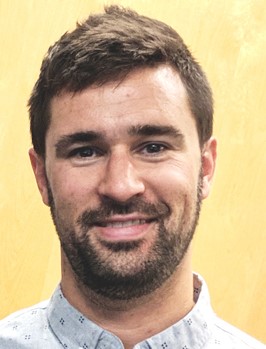 Noah Hurst, University of Wisconsin, USA
Webpage
Noah Hurst, University of Wisconsin, USA
Webpage
Abstract: A series of experiments is described in which magnetized non-neutral electron plasmas are subjected to strong applied electric fields in the plane perpendicular to the magnetic field. The resulting ExB drift dynamics are isomorphic to those of a two-dimensional ideal fluid described by the Euler equations. In this correspondence, the electron density is analogous to the fluid vorticity, and so the plasmas mimic the behavior of fluid vortices. The transverse electric fields act as externally imposed ExB strain flows which can deform and destroy the vortices. Details of the experimental procedure are given, as well as an overview of the experiments that have been carried out so far using this technique. Recent work is then discussed in greater detail, including studies of adiabatic behavior of elliptical electron vortices subject to slowly growing strain flows, and studies of spatial Landau damping of vortex oscillations due to a fluid-wave resonance near the vortex edge. The results are compared with a low-dimensional theoretical model of elliptical vortices, and with particle-in-cell simulations. Finally, the relationship of these results to other similar systems in geophysics, astrophysics, and plasma physics is discussed.
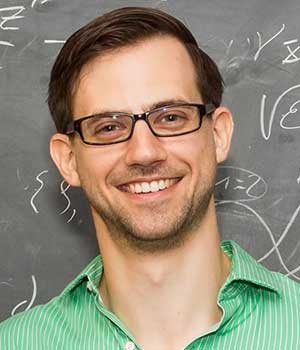 Seth Davidovits, Lawrence Livermore National Laboratory (LLNL), USA
Seth Davidovits, Lawrence Livermore National Laboratory (LLNL), USA
Abstract: High-energy-density (HED) experiments pursuing fusion or X-ray generation can become turbulent. Facilities for HED experiments are also utilized for generating plasma turbulence for study, often with astrophysical applications in mind. The first part of this talk discusses the inference of turbulent flow in experiments without spatial (diagnostic) resolution of the flows; a need for such inference often arises in fusion or X-ray generation experiments, where the plasma is rapidly compressed to small size. Here I highlight examples from Z-pinch experiments optimized for X-ray production, and also briefly discuss recent work showing that turbulence in such two-dimensional compressions may exhibit stronger growth rates with decreasing volume than three-dimensional compressions. The second part of the talk discusses the turbulence generation principles underlying a new experimental design being developed for future laboratory studies of astrophysically-relevant turbulence.
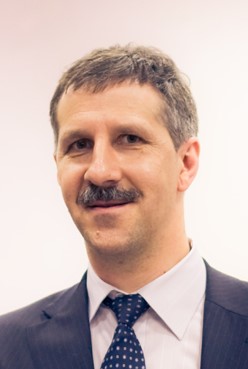 Eugene Churazov, Max Planck Institute for Astrophysics, Garching, Germany and Space Research Institute, Moscow, Russia
Google Scholar, abstract
Eugene Churazov, Max Planck Institute for Astrophysics, Garching, Germany and Space Research Institute, Moscow, Russia
Google Scholar, abstract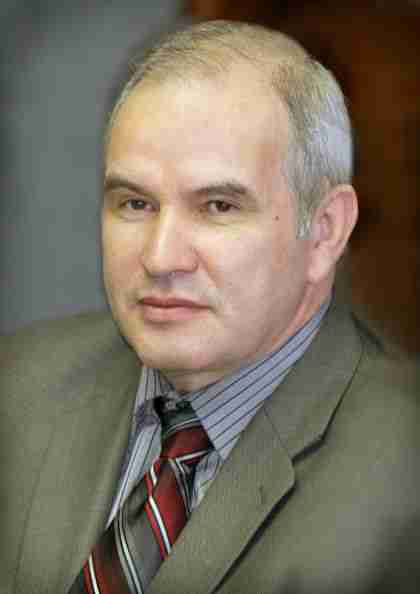
Alexander Ivanov, Budker Institute of Nuclear Physics, Novosibirsk, Russia
The gas dynamic trap (GDT) was invented by Vladimir Mirnov and Dmitrii Ryutov in Novosibirsk in the late 1970s. It is basically a version of a magnetic mirror which is characterized by a long mirror-to-mirror distance exceeding the effective mean free path of ion scattering into a loss cone, a large mirror ratio (R ~ 100) and axial symmetry. Under these conditions the plasma confined in a GDT is isotropic and Maxwellian. The plasma loss rate out of the end mirrors is governed by a set of simple gas-dynamic equations, hence the device's name. Plasma magnetohydrodynamic stability in GDT can be achieved through a favorable averaged pressure-weighted curvature of the magnetic field lines, as was initially proposed, or, alternatively through a sheared plasma rotation at periphery induced by electrically biased electrodes at the end wall. A high flux volumetric neutron source based on a GDT is proposed, which benefits from the high β achievable in magnetic mirrors. Axial symmetry also makes the GDT neutron source more maintainable and reliable, and technically simpler. This review discusses the results of a conceptual design of the GDT-based neutron source which can be used for fusion materials development and as a driver of fission–fusion hybrids. The main physics issues related to plasma confinement and heating in a GDT are addressed by the experiments at the GDT device in Novosibirsk. The review concludes by updating the experimental results obtained, a discussion about the limiting factors in the current experiments and a brief description of the design of a future experimental device for more comprehensive modeling of the GDT-based neutron source. Conceivable approaches to improvement of plasma confinement in a GDT are also considered which would allow to consider the concept application in a fusion reactor.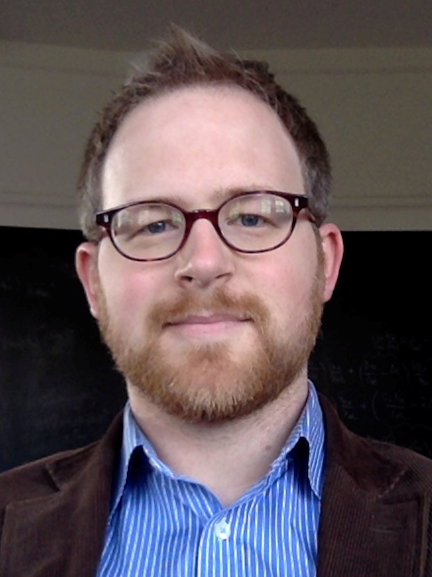
Matt Kunz, Princeton University
Many space and astrophysical plasmas are so hot and dilute that they cannot be rigorously described as fluids. These include the solar wind, low-luminosity black-hole accretion flows, and the intracluster medium of galaxy clusters. All of these plasmas are magnetized and weakly collisional, with plasma beta parameters of order unity or even much larger (“high-beta”). In this regime, deviations from local thermodynamic equilibrium ("pressure anisotropies") and the kinetic instabilities they excite can dramatically change the material properties of such plasmas and thereby influence the macroscopic evolution of their host systems. This talk outlines an ongoing programme of kinetic calculations aimed at elucidating from first principles the physics of waves, turbulence, and transport under these conditions. Three key results will be featured. (1) Shear-Alfvén waves “interrupt” themselves at sufficiently large amplitudes by adiabatically driving a field-biased pressure anisotropy that both nullifies the restoring tension force and excites a sea of ion-Larmor-scale instabilities. (2) Ion-acoustic waves in a collisionless, high-beta plasma similarly excite Larmor-scale instabilities, which ultimately aid the waves' propagation by rendering the plasma more fluid-like and, therefore, incapable of Landau damping. (3) Pressure anisotropy generated either by turbulent fluctuations or by global expansion (as in the solar wind) qualitatively change the properties of magnetized turbulence, affecting plasma heating and the so-called “critical balance”. Contact with observations of the near-Earth solar wind and the intracluster medium of galaxy clusters will be made.
Howard Wilson, University of York, UK
STEP – the Spherical Tokamak for Electricity Production – aims to deliver a prototype power plant by 2040 that will deliver net electricity at the 100MW level. This is a challenging timescale, that will require disruptive changes to how we design and regulate. The plasma scenario presents some of the biggest challenges, and this talk will discuss some of them. A spherical tokamak plasma has some advantages over one at conventional aspect ratio, allowing access to high elongation and beta (ratio of thermal plasma pressure to magnetic field pressure), in a compact geometry. Therefore, while much of the physics in the two designs is similar, there are also key differences. For example, the compact nature means there is little space for a solenoid, so non-inductive current drive is essential; the low magnetic field and high density require novel radio frequency methods for this current drive; the high beta affects the micro-instabilities that drive plasma turbulence and influence confinement; magnetohydrodynamic instabilities must be controlled to limit disruptions while achieving high fusion power and bootstrap current fraction; novel systems are required to manage the exhaust power loads, especially for the inner divertor leg. This talk will explore progress and challenges in modelling these key physics issues in support of STEP. Artem Smirnov, TAE Technologies, Inc
Artem Smirnov, TAE Technologies, Inc
TAE Technologies, Inc. (TAE) is a privately funded company pursuing a novel approach to magnetic confinement fusion, which relies on Field-Reversed Configuration (FRC) plasmas composed of mostly energetic and stable particles. This advanced FRC-based system simplifies the reactor design and could offer a path forward to clean, safe, and economical aneutronic p-B11 fusion. To validate the science behind the FRC-based approach to fusion, an active experimental program is underway at TAE’s state-of-the-art plasma research facility in Orange County, California. The core of the facility is the world’s largest FRC device named Norman. In Norman, tangential injection of variable energy neutral beams (15 – 40 keV hydrogen, up to 20 MW total), coupled with plasma edge biasing, active plasma control, and advanced surface conditioning, led to production of steady-state, hot FRC plasmas dominated by fast ion pressure. High-performance, advanced beam-driven FRCs were produced,1-4 characterized by (1) macroscopic stability, (2) steady-state plasma sustainment, and (3) dramatically reduced transport rates (more than an order of magnitude improvement over conventional FRCs). Collectively, these accomplishments represent a strong argument validating the FRC-based approach to fusion power. This talk will provide a comprehensive overview of the TAE experimental program.

Hye-Sook Park, Lawrence Livermore National Laboratory, USA
Collisionless shocks are ubiquitous in astrophysical environments such as in supernova remnants, jets in active galactic nuclei and gamma ray bursts and are known to be responsible for cosmic ray acceleration. While the theory of diffusive, or Fermi, shock acceleration (DSA) is well-established, the plasma microphysics responsible for the generation of the shocks, the nature of their resulting magnetic turbulence residue, and the injection of particles into DSA is not yet well understood. With the advent of high-power lasers, laboratory experiments with high-Mach number, collisionless plasma flows can provide critical information to help understand the mechanisms of shock formation by plasma instabilities and self-generated magnetic fields. A series of experiments were conducted on Omega and the National Ignition Facility to observe: the filamentary Weibel instability that seeds microscale magnetic fields [1, 2]; collisionless shock formation (seen by an abrupt ~4x increase in density and ~6x increase in temperature); and electron acceleration distributions that deviated from the thermal distributions [3]. Experimental results along with theoretical interpretations aided by particle-in-cell simulations will be discussed. [1] H.-S. Park et al., High Energy Density Phys. 8, 38 (2012); [2] C. Huntington et al., Nat. Phys. 11, 173 (2015); [3] F. Fiuza et al., Nat. Phys. 16, 916 (2020).

Uri Shumlak, University of Washington, USA and Zap Energy, Inc.
The equilibrium Z pinch is a novel approach to magnetic confinement fusion because it does not rely on external magnetic field coils. Equilibrium conditions are reached through the use of sheared plasma flows, which enhance stability and provide a path to thermonuclear fusion. Simple geometry and strong scaling of fusion gain with pinch current form the cornerstones of this compact fusion device. The sheared-flow-stabilized Z pinch has been developed through integrated computational and experimental investigations at the University of Washington in collaboration with Lawrence Livermore National Laboratory. Experimental results demonstrate plasma stabilization, sustained thermonuclear fusion, and agreement with theoretical and computational predictions. Building on these advances, Zap Energy Inc. is developing a low-cost fusion reactor core based on the equilibrium Z pinch.
 Hartmut Zohm, Max Planck Institute for Plasma Physics, Germany
Hartmut Zohm, Max Planck Institute for Plasma Physics, Germany
In the EU Roadmap to Fusion Electricity, DEMO is the step between ITER and a commercial power plant. It is supposed to generate net electricity and have a self-sufficient fuel cycle. The pre-conceptual studies carried out for a tokamak-based DEMO show that the plasma scenario cannot be simply transferred from the ITER Q=10 scenario. We will discuss the physics issues encountered and possible solutions how to overcome them. The focus of the talk will be on the plasma physics aspects, not on reactor integration, and therefore meant to be exciting for plasma physicists from all fields.
 Anvar Shukurov, Newcastle University, UK
Anvar Shukurov, Newcastle University, UK
After a review and summary of the observational evidence for random flows and rotation at large altitudes (1-10 kpc) above the discs of spiral galaxies, I discuss the physical parameters of the off-planar gas and the energy sources of the random motions. I argue that the effects of the turbulent viscosity on large-scale gas flows are significant and propose an exploratory model of the viscous coupling of the rotating galactic disc and the corona.
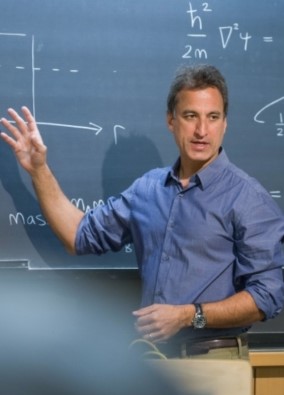 Benjamin Chandran, University of New Hampshire, USA
Benjamin Chandran, University of New Hampshire, USA
A growing body of evidence suggests that the solar wind is powered to a large extent by an Alfven-wave energy flux that is generated by convective motions on the surface of the Sun. The solar wind and solar corona are also affected by the flux of heat, including conductive losses into the radiative lower solar atmosphere. Numerical simulations that account for the above physics are increasingly able to reproduce remote observations of the corona and solar wind. On the other hand, we still lack an analytic theory that provides formulas for key quantities such as the solar mass-loss rate. Analytic treatments are needed for several reasons. They deepen our understanding by distilling complex processes into their most essential elements, they show how different quantities scale with one another, and they encapsulate our understanding into a portable form that can be applied to other systems and used by anyone. In this talk, I will present a recently developed analytic theory of coronal heating and solar-wind acceleration that provides analytic formulas and intuitive explanations for the solar mass-loss rate, the solar-wind speed far from the Sun, the coronal temperature, the heat flux from the corona into the lower solar atmosphere, and the plasma density at the base of the corona.
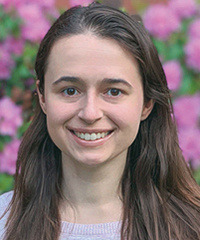 Elizabeth Tolman, Institute for Advanced Study, USA
Elizabeth Tolman, Institute for Advanced Study, USA
Upcoming deuterium-tritium tokamak experiments are expected to have large energetic alpha particle populations. These experiments can be used to study the interaction between these alpha particles and perturbations to the tokamak’s electric and magnetic fields. In this talk, I will first describe why this behavior is important and interesting. Then, I will discuss a new drift kinetic theory to calculate the alpha heat flux resulting from a wide range of perturbation frequencies and periodicities. This theory suggests that the alpha heat flux caused by toroidal field ripple, one type of perturbation, is small. Applied to the toroidal Alfvén eigenmode (TAE), another type of perturbation, the theory suggests a significant alpha heat flux that scales with the square of the TAE amplitude. The TAE amplitude calculated from one saturation condition suggests that TAEs in SPARC, one upcoming deuterium-tritium experiment, will not cause significant alpha transport via the mechanisms in this theory. However, saturation above the level suggested by the simple condition, but within numerical and experimental experience, could cause significant transport.
 Anna Grassi, Sorbonne University, Paris, France
Collisionless shocks are ubiquitous in astrophysical plasmas and play an important role in magnetic field generation/amplification and particle acceleration. While diffusive shock acceleration (DSA) is well established, the details of particle injection into DSA remain a long-standing puzzle, particularly for electrons. High-energy-density (HED) plasma experiments and kinetic plasma simulations offer a promising route to identify the dominant processes at play. Very recently experiments performed at the National Ignition Facility have observed for the first time the formation of high-Mach number collisionless shocks mediated by electromagnetic instabilities and nonthermal electron acceleration. I will discuss the physics behind shock formation and particle acceleration in these laboratory systems and how they can be connected to astrophysical models. Using large-scale, multi-dimensional particle-in-cell (PIC) simulations, we find that the inhomogeneous profiles of laser-ablated plasmas lead to shock formation that can be up to 10 times faster than previous models predicted. The shock front can also develop strong corrugations at the ion gyroradius scale, which can be controlled by changing the electron temperature of the flow. Finally, we show that electrons can be effectively accelerated to nonthermal energies and injected into DSA via a Fermi-like mechanism occurring within the finite, turbulent shock transition. These findings can help guide the development and interpretation for current experimental programs and open exciting prospects for studying the microphysics of turbulent collisionless shocks in the laboratory.
Anna Grassi, Sorbonne University, Paris, France
Collisionless shocks are ubiquitous in astrophysical plasmas and play an important role in magnetic field generation/amplification and particle acceleration. While diffusive shock acceleration (DSA) is well established, the details of particle injection into DSA remain a long-standing puzzle, particularly for electrons. High-energy-density (HED) plasma experiments and kinetic plasma simulations offer a promising route to identify the dominant processes at play. Very recently experiments performed at the National Ignition Facility have observed for the first time the formation of high-Mach number collisionless shocks mediated by electromagnetic instabilities and nonthermal electron acceleration. I will discuss the physics behind shock formation and particle acceleration in these laboratory systems and how they can be connected to astrophysical models. Using large-scale, multi-dimensional particle-in-cell (PIC) simulations, we find that the inhomogeneous profiles of laser-ablated plasmas lead to shock formation that can be up to 10 times faster than previous models predicted. The shock front can also develop strong corrugations at the ion gyroradius scale, which can be controlled by changing the electron temperature of the flow. Finally, we show that electrons can be effectively accelerated to nonthermal energies and injected into DSA via a Fermi-like mechanism occurring within the finite, turbulent shock transition. These findings can help guide the development and interpretation for current experimental programs and open exciting prospects for studying the microphysics of turbulent collisionless shocks in the laboratory.
 Frank Jenko, IPP Garching, Germany
It is a key goal of magnetic confinement fusion (MCF) research to develop and build devices that allow us to create a plasma at sufficiently high pressure and energy confinement time, so that Lawson's criterion for a burning plasma can be met. There was breathtaking progress along these lines between the 1970s and 1990s, largely based on a "trial-and-error" approach. With the preparation of ITER operation and attempts to design first versions of future fusion power plants, it became clear, however, that a more targeted "predict-first" approach is needed at this point to save significant amounts of time and resources in the further development of fusion energy. Fortunately, the power of High Performance Computing keeps growing at a remarkable speed, with exascale systems around the corner. These platforms open up new possibilities to solve the complex nonlinear equations underlying many observed phenomena in MCF plasmas, and to move from an interpretative to a truely predictive approach. In this context, computing, data analysis, and machine learning are increasingly intertwined to provide reliable predictions. So how and when will we be able to predict plasma confinement in fusion devices? This question will be at the heart of this presentation.
Frank Jenko, IPP Garching, Germany
It is a key goal of magnetic confinement fusion (MCF) research to develop and build devices that allow us to create a plasma at sufficiently high pressure and energy confinement time, so that Lawson's criterion for a burning plasma can be met. There was breathtaking progress along these lines between the 1970s and 1990s, largely based on a "trial-and-error" approach. With the preparation of ITER operation and attempts to design first versions of future fusion power plants, it became clear, however, that a more targeted "predict-first" approach is needed at this point to save significant amounts of time and resources in the further development of fusion energy. Fortunately, the power of High Performance Computing keeps growing at a remarkable speed, with exascale systems around the corner. These platforms open up new possibilities to solve the complex nonlinear equations underlying many observed phenomena in MCF plasmas, and to move from an interpretative to a truely predictive approach. In this context, computing, data analysis, and machine learning are increasingly intertwined to provide reliable predictions. So how and when will we be able to predict plasma confinement in fusion devices? This question will be at the heart of this presentation. Ellen Zweibel, University of Wisconsin, Madison, USA
It's now widely recognized that cosmic rays have considerable influence on the dynamics and energy balance of thermal gas in and around galaxies. While it's their collisional interactions that render cosmic rays most directly visible, in many respects their collisionless interactions, mediated by kinetic scale plasma waves and instabilities, are more significant. These microscale interactions are now captured by fluid models and used in large scale simulations of galaxy formation and evolution, where they are revealing surprising behavior. After briefly reviewing the basics, I will discuss some open questions in the microphysics of cosmic ray - thermal gas coupling, and how the large scales react back on the small ones.
Ellen Zweibel, University of Wisconsin, Madison, USA
It's now widely recognized that cosmic rays have considerable influence on the dynamics and energy balance of thermal gas in and around galaxies. While it's their collisional interactions that render cosmic rays most directly visible, in many respects their collisionless interactions, mediated by kinetic scale plasma waves and instabilities, are more significant. These microscale interactions are now captured by fluid models and used in large scale simulations of galaxy formation and evolution, where they are revealing surprising behavior. After briefly reviewing the basics, I will discuss some open questions in the microphysics of cosmic ray - thermal gas coupling, and how the large scales react back on the small ones.